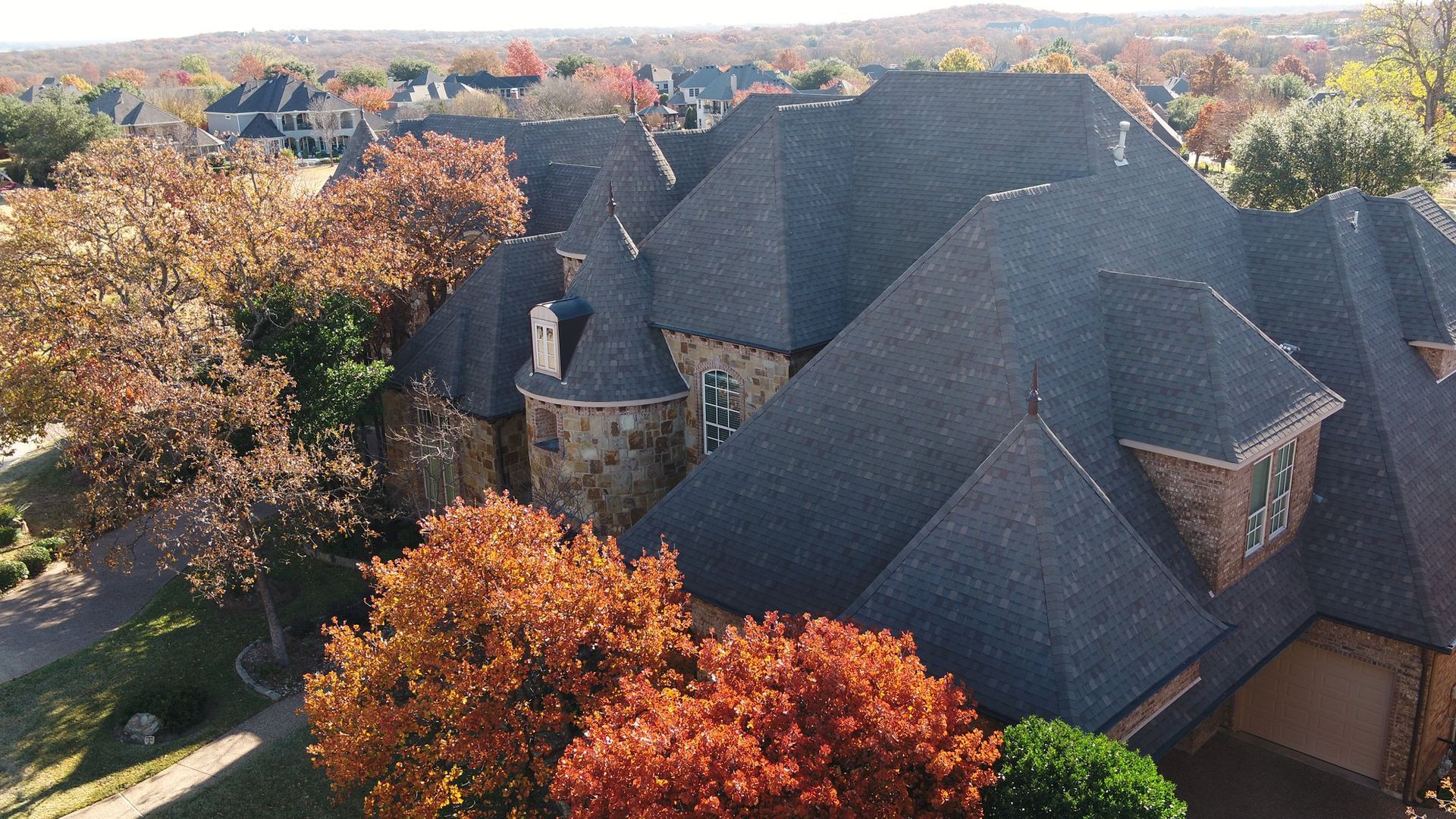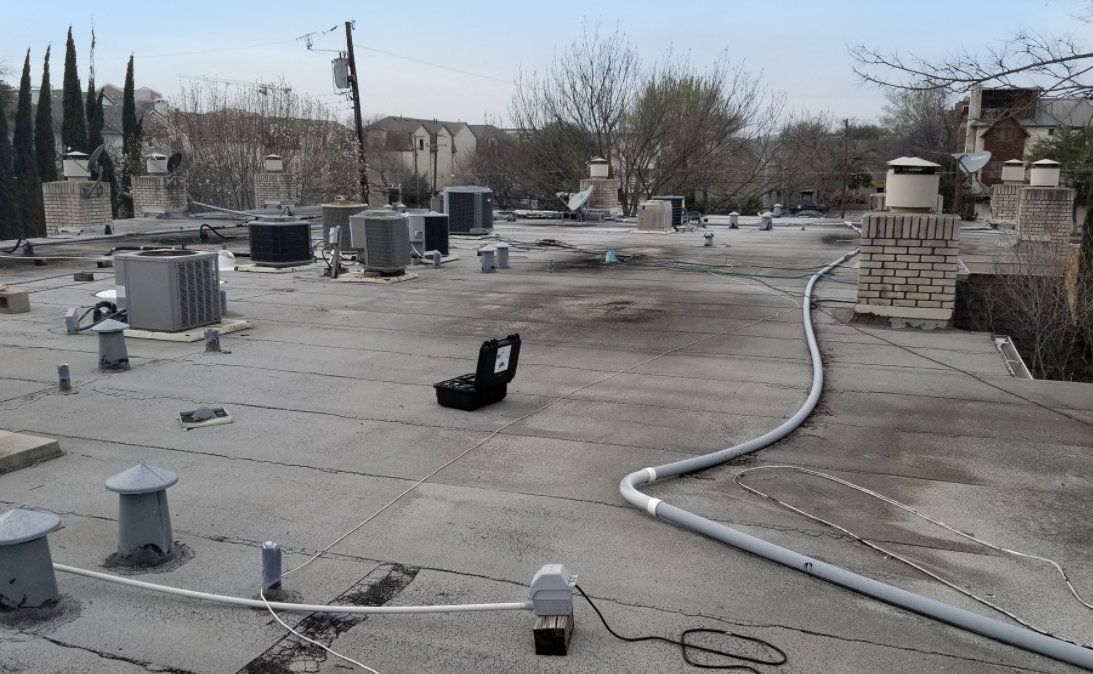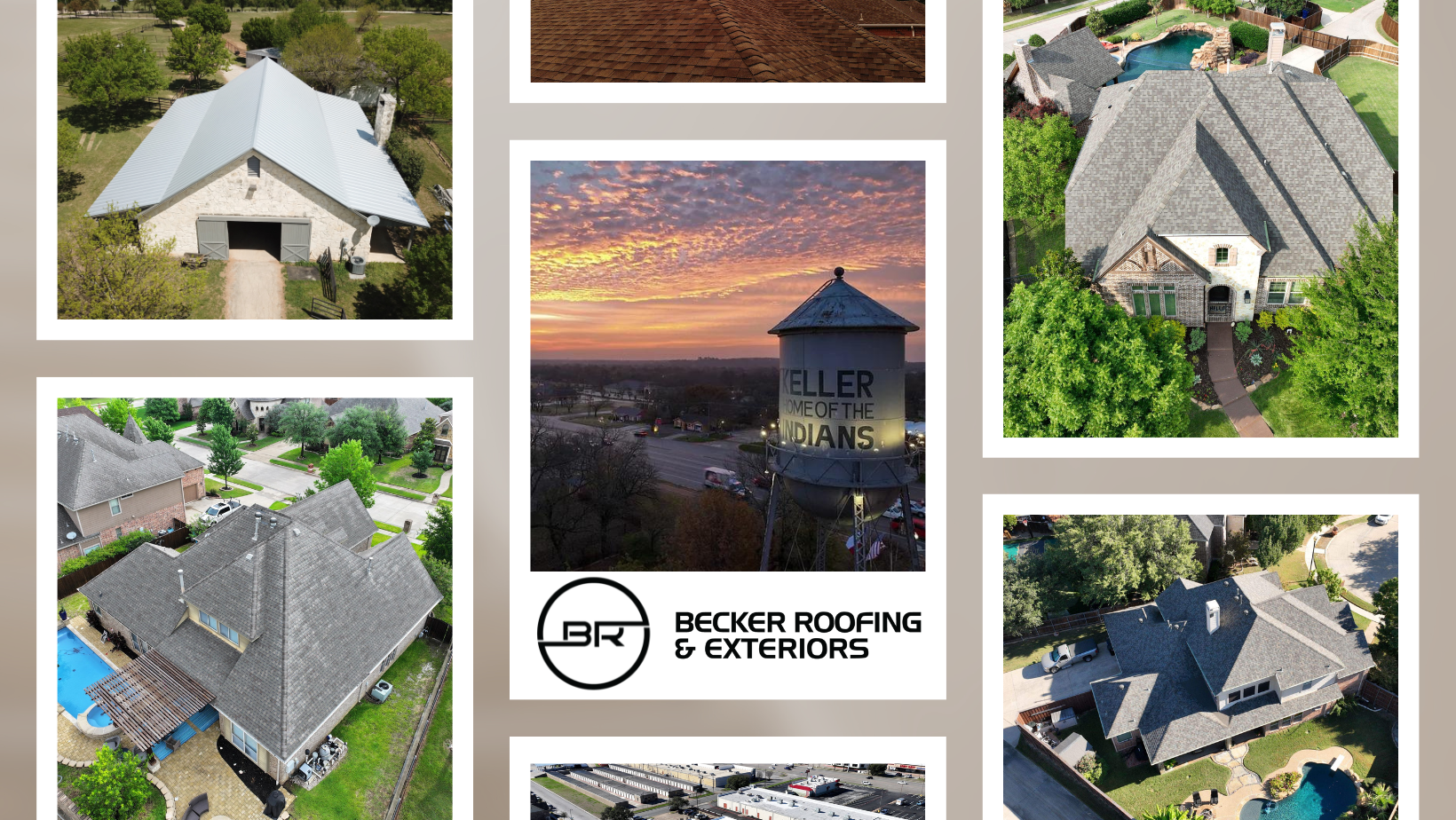Shingle Color Impact on Attic Temperature: Key Factors
Discover how shingle color affects temperature control in your attic. Explore the impact on energy efficiency on our blog.

How Shingle Color Impacts Attic Temperature Control
Key Highlights
- The color of your roof can impact the temperature inside your home or building.
- Darker roofs absorb more heat, while lighter roofs absorb less heat.
- Choosing a lighter-colored roof can help keep your home cooler and reduce the strain on your cooling system.
- Proper attic ventilation is important for maintaining a comfortable temperature inside your home.
- Cool roofing solutions, such as light-colored shingles and reflective materials, can further enhance temperature control and energy efficiency.
- Evaluating roofing materials and considering factors like reflectivity and heat absorption can help you make an informed decision for optimal temperature control.
Introduction
The color of your roof may not be something you think about often, but it can actually have a significant impact on the temperature inside your home or building. When it comes to controlling the temperature in your attic, the color of your shingles plays a crucial role. Dark-colored roofs tend to absorb more heat, while lighter-colored roofs reflect more heat away. This means that the color of your roof can directly affect the amount of heat that enters your home, which in turn can impact your energy efficiency and comfort.
In this blog, we will explore the science behind how shingle color affects attic temperature control. We will discuss the heat absorption properties of light and dark shingles, the role of material reflectivity in attic cooling, and the various options available for evaluating shingle colors for optimal temperature control. Additionally, we will compare different roofing materials and analyze their impact on attic temperature. Finally, we will explore the financial incentives for choosing cooler shingles and provide practical tips for reducing attic heat through roofing choices.
By the end of this blog, you will have a comprehensive understanding of how shingle color impacts attic temperature control and be equipped with the knowledge to make informed decisions for your roofing needs.
The Science Behind Shingle Color and Attic Temperature
The color of your roof shingles can significantly impact the temperature inside your attic. Dark-colored shingles, such as black or dark gray, have a higher heat absorption rate. This means that they absorb more heat from the sun, resulting in a warmer attic and potentially higher cooling costs. On the other hand, lighter-colored shingles, such as white or light gray, reflect more heat away, keeping the attic cooler and reducing the strain on your cooling system. Understanding the science behind shingle color and heat absorption is crucial for maintaining a comfortable and energy-efficient home.
How Light and Dark Shingles Affect Heat Absorption
Dark-colored shingles, such as black or dark gray, have a higher heat absorption rate compared to lighter-colored shingles. This is because darker colors absorb a larger portion of the sun's rays, converting them into heat. As a result, the temperature inside your attic can increase, making your home warmer. In contrast, lighter-colored shingles reflect more heat away, preventing excessive heat buildup in the attic and keeping your home cooler.
The impact of shingle color on heat absorption is particularly noticeable during the warmer months when the sun's rays are stronger. Choosing a lighter color for your roof can help reduce the amount of heat that enters your home, thus lowering your cooling costs and improving overall comfort. It's important to consider the climate and sun exposure of your location when deciding on the color of your roof shingles to ensure optimal temperature control.
The Role of Material Reflectivity in Attic Cooling
In addition to shingle color, the material used for your roof can also impact attic temperature control. The reflectivity of the roofing material plays a significant role in determining how much heat is absorbed by your home. Lighter-colored materials tend to have higher reflectivity ratings, meaning they reflect more of the sun's rays away from the roof. This helps to keep the attic and the rest of the home cooler.
On the other hand, darker-colored materials have lower reflectivity ratings and absorb more heat, which can lead to higher temperatures inside the attic. Therefore, when choosing a roofing material, it's important to consider both the color and the reflectivity of the material to ensure optimal attic cooling. By selecting a material with higher reflectivity, you can effectively reduce the amount of heat that is transferred to your home, resulting in lower cooling costs and a more comfortable living environment.
Evaluating Shingle Colors for Optimal Temperature Control
When evaluating shingle colors for optimal temperature control, it's important to consider the specific needs of your home and the climate in which you live. Lighter-colored shingles are generally more effective at reflecting heat away from the roof, making them a better choice for warmer climates or during the summer months. These shingles can help reduce the amount of heat that enters your attic, keeping your home cooler and reducing the strain on your cooling system. However, it's also important to balance the aesthetic appeal of the shingle color with its heat reflection properties to ensure a visually appealing and energy-efficient roof.
The Lightest Shingle Colors and Their Benefits
Light-colored shingles, such as white, light gray, or beige, offer several benefits for optimal temperature control and energy efficiency. Here are some key benefits of choosing the lightest shingle colors:
- Reflect more heat away from the roof, keeping the attic and the rest of the home cooler.
- Reduce the strain on your air conditioning system, resulting in lower cooling costs.
- Create a visually appealing roof that complements a wide range of architectural styles.
- Enhance the curb appeal and value of your home.
By opting for the lightest shingle colors, you can create a cooler and more comfortable living environment while also enjoying the benefits of energy savings and a visually appealing roof. Consult with a roofing professional to explore the available options and choose the light shingle color that best suits your needs and preferences.
Cool Shingles: Technology and Material Innovations
Advancements in technology and material innovations have led to the development of cool shingles, which are specifically designed to optimize temperature control and energy efficiency. Here are some key features and benefits of cool shingles:
- Reflect a higher percentage of the sun's rays, reducing heat absorption and keeping the roof and attic cooler.
- Enhance the overall energy efficiency of your home, resulting in lower cooling costs.
- Provide better insulation and reduce the strain on your HVAC system.
- Offer a wide range of color options, allowing you to choose a visually appealing roof that suits your style and preferences.
By choosing cool shingles, you can make the right choice for optimal temperature control and energy efficiency. Consult with a roofing professional to explore the cool shingle options available and determine the best fit for your home and HVAC system.
Comparative Analysis of Cool Roofing Solutions
When it comes to cool roofing solutions, there are various options available that offer different levels of energy efficiency and temperature control. Two popular choices are metal roofs and asphalt shingles. Let's compare these two options to understand their impact on attic temperature and energy efficiency.
GAF Cool Shingles Versus CertainTeed Solaris
GAF Cool Shingles and CertainTeed Solaris are two leading brands of cool shingles that offer exceptional energy efficiency and temperature control. Here's a comparative analysis of these two cool roofing solutions:
Brand
GAF Cool Shingles
CertainTeed Solaris
Reflectivity Rating
High
High
Heat Absorption
Low
Low
Energy Efficiency
Excellent
Excellent
Color Options
Wide range
Wide range
Aesthetic Appeal
Visually appealing
Visually appealing
Cost
Varies
Varies
Both GAF Cool Shingles and CertainTeed Solaris offer excellent performance in terms of energy efficiency and keeping the roof cool. Consider your specific needs and budget to make the right choice for your home.
Stone Coated Steel Shingles: A Temperature Comparison
Stone coated steel shingles are known for their durability and aesthetic appeal, but how do they compare in terms of temperature control? In cooler climates, stone coated steel shingles can help retain heat and keep the building warmer. However, in warmer climates, these shingles can also help reduce heat absorption and keep the building cooler. The unique combination of stone coating and steel core provides excellent insulation and temperature regulation properties. If you live in a climate with extreme temperature variations, stone coated steel shingles can be a great choice for maintaining a comfortable and energy-efficient home.
The Impact of Roofing Material on Attic Temperature
The choice of roofing material can have a significant impact on attic temperature. Different roofing materials have varying levels of heat absorption and reflectivity, which can directly affect the temperature inside your home. For example, asphalt shingles, especially darker ones, tend to absorb more heat, resulting in higher attic temperatures. On the other hand, metal roofs have higher reflectivity and lower heat absorption, making them a cooler option for your attic. Understanding the impact of roofing materials on attic temperature is essential for making an informed decision for your home.
Asphalt Shingles and Heat Retention
Asphalt shingles are the most popular choice for residential roofs in the United States. However, they are known for their heat absorption properties. Dark-colored asphalt shingles can absorb more heat from the sun, resulting in higher attic temperatures and potentially warmer interiors. This heat retention can increase the strain on your cooling system and lead to higher energy bills. To mitigate this, consider opting for lighter-colored asphalt shingles or exploring cool shingle options that provide better heat reflection and temperature control. By choosing the right asphalt shingles, you can maintain a comfortable home temperature and improve energy efficiency.
Metal Roofs: Cooler by Comparison?
Metal roofs are gaining popularity for their durability, longevity, and energy-efficient properties. When it comes to attic temperature control, metal roofs are known for their superior heat reflectivity. They absorb less heat from the sun compared to other roofing materials, keeping the attic and the rest of the home cooler. However, it's important to note that proper roof ventilation is essential for maximizing the cooling benefits of a metal roof. Adequate ventilation allows hot air to escape and prevents excessive heat buildup in the attic. By combining a metal roof with proper roof ventilation, you can effectively regulate the interior temperature of your home and improve overall energy efficiency.
Financial Incentives for Choosing Cooler Shingles
Choosing cooler shingles for your roof not only improves temperature control and energy efficiency but also offers financial incentives. Many utility companies and government programs provide rebates and incentives for homeowners who opt for energy-efficient roofing solutions. These incentives can help offset the cost of installing cooler shingles and provide long-term savings through reduced energy bills. By taking advantage of these financial incentives, you can make a smart investment in your home's energy efficiency and enjoy the benefits of lower cooling costs and increased comfort.
Rebates and Incentives for Energy-Efficient Roofing
Many utility companies and government programs offer rebates and incentives for homeowners who choose energy-efficient roofing solutions. These programs aim to promote sustainable practices and reduce the overall energy consumption of buildings. By installing energy-efficient cool shingles, you may be eligible for rebates that can offset a portion of the installation costs. Additionally, the long-term savings from reduced cooling bills can contribute to significant financial benefits. It's worth exploring the available rebates and incentives in your area to take advantage of these financial opportunities and make a positive impact on the environment.
Long-Term Savings: Energy Costs and Roof Lifespan
Investing in cooler shingles and energy-efficient roofing solutions can lead to long-term savings. By reducing the heat absorption of your roof and improving temperature control, you can lower your cooling costs during hot seasons. This can result in significant savings on your energy bills over time. Additionally, energy-efficient roofing materials often have a longer lifespan compared to traditional options. This means that you may not need to replace your roof as frequently, saving you money on roof replacement costs. By considering the long-term financial benefits of energy-efficient roofing, you can make a wise investment in your home's energy efficiency and reduce your overall expenses.
Practical Tips for Reducing Attic Heat Through Roofing Choices
Reducing attic heat through roofing choices involves a combination of factors, including roof color, proper attic ventilation, and optimizing your cooling system. Here are some practical tips for achieving optimal temperature control:
- Choose lighter-colored shingles to reflect more heat away from your home.
- Ensure proper attic ventilation to allow hot air to escape and prevent heat buildup.
- Consider upgrading your cooling system to a more energy-efficient option.
- Consult with a roofing professional to evaluate your roofing choices and determine the best solutions for reducing attic heat.
By implementing these tips, you can create a more comfortable and energy-efficient living environment while maximizing the benefits of your roofing choices.
Importance of Color and Reflectivity Ratings
The color and reflectivity of your roof shingles play a crucial role in attic temperature control and overall energy efficiency. Lighter-colored shingles with higher reflectivity ratings reflect more of the sun's rays away from your home, reducing heat absorption and keeping your home cooler. This can help lower the strain on your cooling system and result in lower energy bills. By considering the importance of color and reflectivity ratings, you can make informed decisions when selecting roofing materials and optimize the performance of your cooling system for maximum comfort and energy savings.
Enhancing Ventilation to Offset Heat Buildup
Proper attic ventilation is essential for offsetting heat buildup and maintaining a comfortable temperature inside your home. By allowing hot air to escape from the attic, you can prevent excessive heat transfer to the living spaces. This can be achieved through the installation of proper intake and exhaust vents, as well as the use of electric fans to improve air circulation. Enhanced ventilation helps to create a cooler attic environment, reducing the strain on your cooling system and improving overall energy efficiency. Consult with a roofing professional to assess your attic ventilation needs and ensure proper airflow for optimal temperature control.
Conclusion
In conclusion, the color of your shingles impacts attic temperature control significantly. Understanding how light and dark shingles affect heat absorption, material reflectivity, and innovative technologies can help you make informed decisions for optimal temperature regulation. By choosing cooler shingles wisely, you can enhance energy efficiency, potentially qualify for rebates, and extend the lifespan of your roof. Don't overlook the financial incentives and long-term savings associated with selecting the right roofing material. Implementing practical tips like improving ventilation and considering reflectivity ratings can further reduce attic heat buildup, ensuring a comfortable and energy-efficient home environment.
Frequently Asked Questions
Do lighter shingles mean lower attic temperatures?
Yes, lighter-colored shingles reflect more heat away and can result in lower attic temperatures. This can reduce the need for excessive air conditioning and help keep your home cooler during the summer months.
Can installing cooler shingles lead to rebates?
Yes, many utility companies and government programs offer rebates for homeowners who install energy-efficient cool shingles. These rebates incentivize energy efficiency and can help offset the cost of installing cooler shingles.
How do GAF Cool Shingles compare to CertainTeed Solaris in temperature control?
GAF Cool Shingles and CertainTeed Solaris are both popular cool shingles that offer excellent temperature control and energy efficiency. Consult with a roofing professional to compare the specific features and benefits of each brand and determine the best fit for your home.
Our Location
Hours
Hours
Contact Us
License # 03-0235










